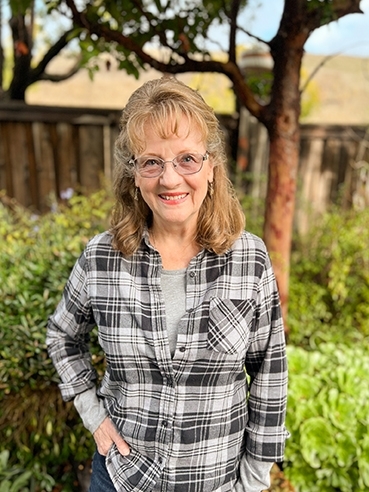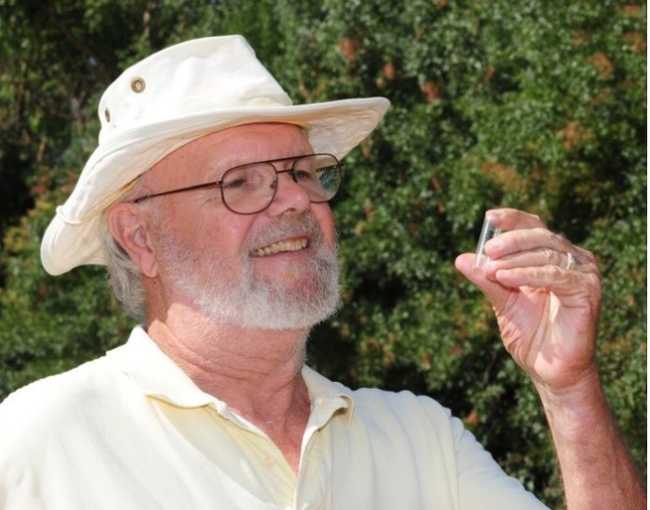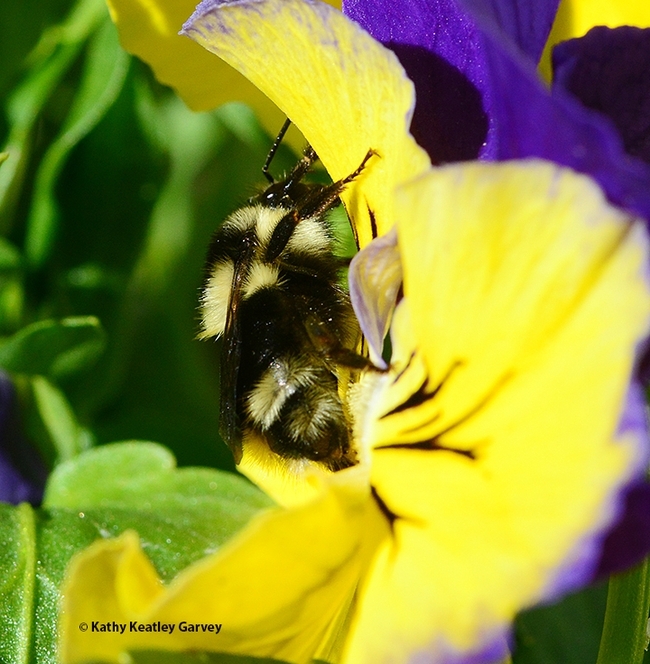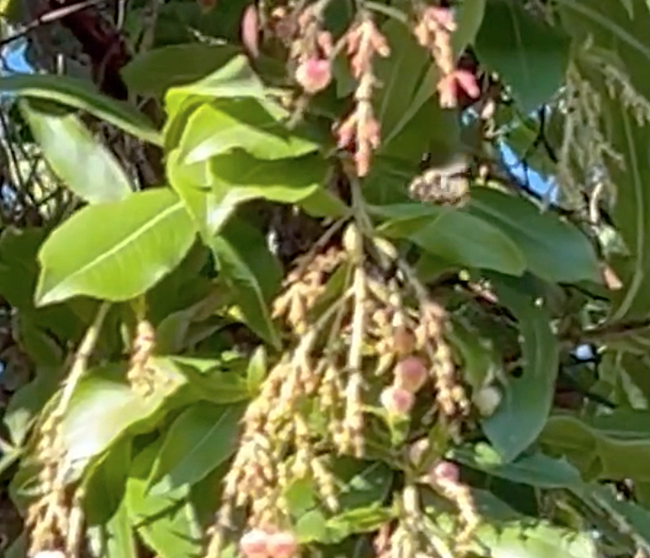
You take a video, email it to the sponsor, the Bohart Museum of Entomology, and you win the 4th annual Robbin Thorp Memorial First-Bumble-Bee-of-the-Year Contest
Congratulations, Nancy Hansen! The Fairfield resident emailed her video of a black-tailed bumble bee, Bombus melanopygus, at 10:57 a.m., Monday, Jan. 1 to the Bohart Museum. (See her video on YouTube)
Contest coordinator Lynn Kimsey, UC Davis distinguished professor of entomology and director of the Bohart Museum, applauded the winner as the earliest ever recipient, and the first from Solano County.
Contest rules state that the first person to photograph a bumble bee in either Yolo or Solano and email it to the sponsor, the Bohart Museum, will receive a coffee cup designed with the endangered Franklin's bumble bee, the bee that the legendary Robbin Thorp (1933-2019), a UC Davis distinguished emeritus professor and a 30-year member of the Department of Entomology and Nematology faculty, monitored for decades.
"I've lived in Fairfield since 1970 and I retired from Kaiser Medical Center Vallejo after 33 years," Hansen said. "I'm a longtime gardener and flower-aholic! I'm very interested in soil health, pollinators and in soil microbes. I didn't plant the Madrone tree but I'm happy it provides food for pollinators most of the year. The first year we lived here, 2017, the tree was full of bees. Their buzz sounded like an airplane engine, but since then I've seen fewer and fewer bees."
"On Monday I was out back enjoying the bit of sunshine that had peaked through the clouds when I heard buzzing in my Madrone tree. I went over, looked and I saw a lot of honey bees, but then I looked up and saw the bumble bee. I ran to get my camera hoping I could catch his picture before he flew away."
Hansen retired as a cardiology technician at Vallejo's Kaiser facility, where she performed the cardiology testing for the doctors. "It was one of the most interesting and varied jobs in the facility," she said. "I learned so much during my working years. I was in charge of training new employees so I was able to pass that knowledge on."
Previous record-holders:
2023: Ria deGrassi of Davis, who photographed a B. melanopygus at 12:32, Jan. 8 on a ceanothus in her yard.
2022: Tie between Maureen Page, then a doctoral candidate in the lab of pollination ecologist Neal Williams, professor, UC Davis Department of Entomology and Nematology; and Ellen Zagory of Davis, retired director of public horticulture for the UC Davis Arboretum and Public Garden. Each photographed a bumble bee on manzanita in the Arboretum at 2:30 p.m., Jan. 1. Page photographed a B. melanopygus, while Zagory captured an image of the yellow-faced bumble bee, Bombus vosnesenskii.
2021: UC Davis postdoctoral researcher Charlie Casey Nicholson, then of the Williams lab and the Elina Lastro Niño lab, photographed a B. melanopygus at 3:10 p.m., Jan. 14 in a manzanita patch in the Arboretum.

Thorp, a tireless advocate of pollinator species protection and conservation, co-authored two books in 2014, during his retirement: Bumble Bees of North America: An Identification Guide (Princeton University,) and California Bees and Blooms: A Guide for Gardeners and Naturalists (Heyday). Every year he looked forward to finding or seeing the first bumble bee in the area.
Thorp co-taught The Bee Course from 2002 to 2019. An intensive nine-day workshop affiliated with the American Museum of Natural History and held annually at the Southwestern Research Station, Portal, Ariz., it draws participants from around the world, including conservation biologists, pollination ecologists, and other biologists who want to gain greater knowledge of the systematics and biology of bees.
For years, Thorp monitored Franklin's bumble bee, found only in a small range in Southern Oregon and Northern California, and now feared extinct. He last spotted it in 2006.
Soon Nancy Hansen will receive a coffee cup with an image of that bee.
Attached Images:

